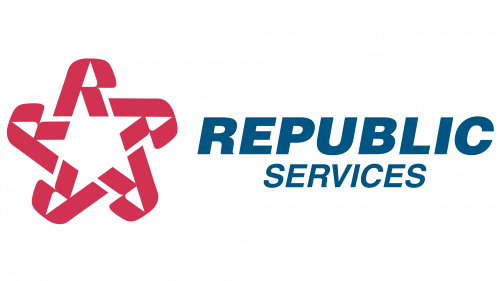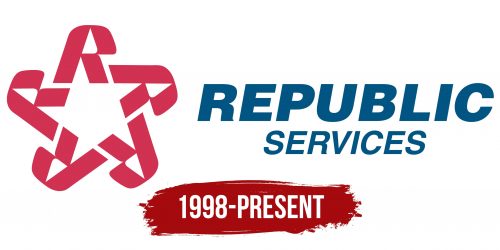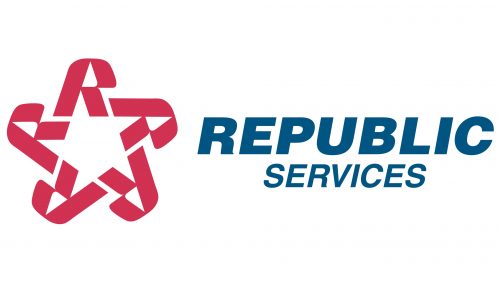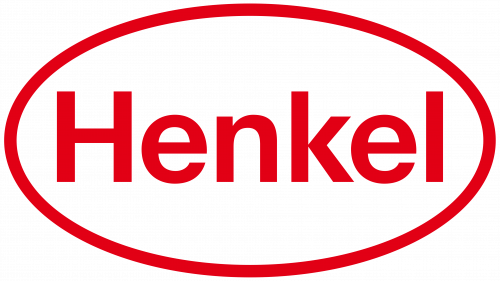The Republic Services logo emphasizes the brand’s commitment to providing premium-level service. The company guarantees impeccable cleanliness and order, focusing on high standards in every detail. The emblem’s elements reflect care for the environment, symbolizing the brand’s dedication to environmental responsibility and the implementation of modern waste recycling technologies. The logo also highlights the importance of material reuse, demonstrating that the company actively supports sustainable development, not merely managing waste.
Republic Services: Brand overview
Republic Services’ history began in 1981 when Wayne Huizenga, a well-known American businessman, established Waste Management, Inc. in Fort Lauderdale, Florida. While Republic didn’t officially exist then, this period can be seen as its early foundation, as many of the key figures and strategies that would later define the company emerged from Waste Management.
A pivotal moment occurred in 1995 when Huizenga left as CEO of Waste Management and founded Republic Waste Industries with a group of investors. This company would eventually evolve into the organization known today. Its primary goal was to compete with Waste Management in the waste industry.
The company quickly grew by acquiring small and medium-sized waste businesses across the U.S. This aggressive acquisition strategy helped establish a solid foundation for future growth and expand its market share rapidly.
In 1998, the organization rebranded as Republic Services, Inc. This rebranding reflected its shift from being a disposal company to offering comprehensive environmental services.
Throughout the late 1990s and early 2000s, the company continued its acquisition strategy, significantly expanding its geographic reach and the range of services it offered.
A major turning point came in 2008 when Republic merged with its largest competitor, Allied Waste Industries, in a $6.1 billion deal. This merger created the second-largest company in the U.S. waste sector. It allowed the organization to expand its customer base, strengthen its competitive edge, and improve operational efficiency.
The company underwent significant restructuring following the merger, unifying its brand, culture, and operating systems. The long and costly process resulted in a more competitive and efficient organization.
2010, the company continued its growth strategy by acquiring smaller waste management businesses nationwide. It focused on markets with strong growth potential where it could improve its position.
In 2012, the Republic introduced GPS tracking systems in its fleet, marking a significant technological advancement. This innovation allowed for optimized routes, improved efficiency, and enhanced customer service.
In 2014, the company launched the Blue Planet initiative to upgrade operations across all divisions. This effort introduced new technologies, improved safety measures, and increased efficiency.
The company expanded its recycling operations in 2016, investing in new facilities and upgrading existing ones to meet the growing demand for recycling services.
In 2018, the company continued its acquisition strategy, purchasing several local waste management companies, which helped expand its service offerings and strengthen its presence in key markets.
In 2019, the company introduced its “2030 Sustainability Goals,” focusing on innovation in environmental services, operational efficiency, and human capital development.
Despite global challenges in 2020 and 2021, Republic continued to grow, investing in automation and digital technologies to adapt to new realities, including contactless payment systems, customer-facing web services, and AI in route optimization.
A major acquisition occurred in 2022 when the company purchased US Ecology, a leader in hazardous waste management, for $2.2 billion. This deal significantly expanded the company’s capabilities in hazardous waste handling and strengthened its position in the environmental services industry.
Over the years, the company has demonstrated its ability to adapt to changing market conditions and customer needs. Starting as a small challenger to larger competitors, it has become a leading waste management player.
By 2023, the company had established itself as one of the largest waste management companies in the U.S., serving millions of customers. It continues to invest in research and development to stay ahead of industry challenges and remain a leader in the field.
Meaning and History
What is Republic Services?
This is a giant in the waste management sector that coordinates complex collection, recycling, and disposal processes for millions of customers across the country. The company offers various environmental services, including composting programs, landfill gas-to-energy projects, and hazardous waste treatment. It plays a key role in the nation’s waste management infrastructure, operating a vast network of landfills, recycling facilities, and transfer stations. The company’s recognizable blue trucks have become familiar in both business and residential areas, ensuring the cleanliness and well-being of cities and towns.
1998 – today
The Republic Services logo incorporates symbolism reminiscent of the recycling symbol, referencing the fields of ecology and resource reuse. The star, composed of five ribbons, each forming the letter “R,” symbolizes the cyclical and interconnected recycling processes. This highlights the company’s commitment to sustainable development and environmental awareness, which is important in a growing concern over climate change and waste issues.
The red color of the star is associated with a republic, creating a link to the company’s name—Republic Services. It also symbolizes energy, determination, and the drive for new achievements. This color choice emphasizes the importance of social responsibility and the company’s active role in maintaining cleanliness and order in society.
The lettering on the right is in blue italics, creating a sense of dynamism and continuous forward motion. The font underscores the focus on modern technology and ongoing development, which is crucial for a company providing waste disposal and resource management services.
Overall, this creates a strong image of a company that addresses waste recycling challenges, cares for the future, and offers environmentally friendly and sustainable solutions.





